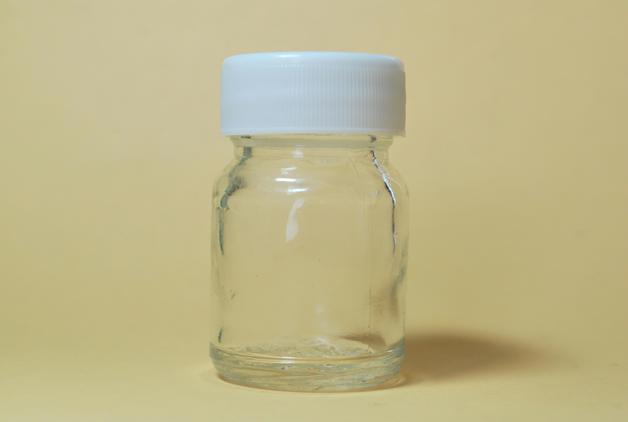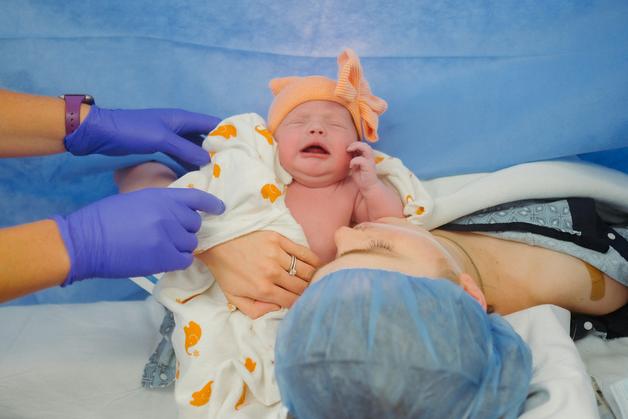Suddenly confronted with the phrase “protein in urine pregnancy,” many parents feel a subtle thread of anxiety winding into their thoughts. Is this unusual? Does it endanger the baby? Could these microscopic traces, invisible to the eye, really shift the course of a pregnancy? Fears swirl around words like “pre-eclampsia” or “kidney function,” pressing for clarity and reassurance. Some may wonder if diet, hydration, or even physical activity holds hidden dangers. Others, after a tense prenatal visit, might find themselves scanning their own reflections for swelling or fatigue, unsure where normal discomfort ends and a warning sign begins. Beyond the test results and terminology lies a central challenge: balancing vigilance with peace, all while making sense of the science to keep both mother and child safe. Here’s what stands out: the journey through protein in urine pregnancy weaves together medical facts, practical advice, and moments that invite calm—even in the face of the unknown.
What Happens to Kidneys During Pregnancy? Fluid Dynamics and Silent Adaptations
Have you ever paused to marvel at how the kidneys recalibrate their responsibilities during pregnancy? Picture this: these intricate organs, almost ceaseless in their filtration, suddenly accelerate their work to manage the tidal increase in blood volume. This state, called hyperfiltration, often leads to trace amounts of protein—frequently albumin—escaping into the urine. For most, this leakage hovers safely below 250–300 mg over 24 hours, simply signaling normal adaptation. Why such numbers? Because they mark the level at which the body’s adjustments are efficient enough to support another life, yet not overwhelmed.
Yet, what if the numbers climb above the threshold? Then, it’s a sign the kidneys face extra demands or stress. Alarm bells seldom ring—no sharp discomfort warns you. Protein in urine pregnancy, in most cases, is utterly silent, picked up only by a clinical eye and a test strip. The absence of pain or visible change is why routine urine screening becomes a non-negotiable part of prenatal care, silently protecting where no symptoms dare tread.
Types and Causes of Proteinuria: One Symptom, Many Origins
Not all journeys through protein in urine pregnancy follow the same route. You’ll encounter subtle gradients—a spectrum of normalcy, temporary blips, and red flags:
- Physiological proteinuria: Slightly raised but under the “safety limit”; the body’s answer to heightened filtration.
- Transient proteinuria: Ever felt unwell, perhaps after a fever or while dehydrated? Sometimes stress or vigorous exercise causes fleeting spikes. They usually drift back to normal on their own.
- Orthostatic proteinuria: Here’s a curious one—protein in the urine appears when upright but vanishes if lying down, usually benign for the young.
- Pathological proteinuria: Consistently high readings hint at deeper concerns—think preeclampsia, chronic kidney conditions, lupus, or diabetes fallout.
Additional culprits creep in: hypertensive disorders after mid-pregnancy, urinary tract infections, select medications, obesity, genetics, twins, even advancing maternal age—all can tip the balance, gently or dramatically.
Questions arise: does every raised protein signify emergency? Not at all. Sometimes the context—fever, dehydration, sample mishaps—explains away anomalies. Other times, persistence signals a need for greater scrutiny and a delicate, thorough interpretation of the data.
Warning Signs and Symptoms: Which Changes Need Attention?
Foamy urine: an oddity, rarely dramatic, can whisper the presence of protein. But should you worry at first glance? More essential is the company it keeps—other symptoms that cluster with protein in urine pregnancy signal caution:
- Notable swelling, especially in the face, hands, or ankles
- Sudden, unexplained weight gain
- Throbbing, persistent headaches
- Vision changes: flashes, blurring, strange sensations
- Right-sided upper abdominal pain
- Noticeably reduced urine output or dark urine
- Intense fatigue, persistent nausea unlinked to early pregnancy
Run-of-the-mill mild swelling? Often harmless. But when swelling escalates quickly or these signs gather, they warrant prompt contact with your healthcare provider. Danger sometimes lurks with little warning—asymptomatic proteinuria makes regular prenatal checks not just a formality, but a shield for well-being.
How Protein in Urine Pregnancy Is Detected: Science at Your Fingertips
Each prenatal visit often begins with a small ritual—a quick urine dipstick test. Simple, yes, but profoundly revealing. Trace protein found on this strip? Next come more precise measures:
- 24-hour urine collection: The gold standard—quantifying the true load, with readings over 300 mg suggesting a need for deeper evaluation.
- Protein-to-creatinine ratio: A handy spot-check; a ratio of 0.3 or more raises eyebrows.
- Bloodwork follows: assessing renal function, liver enzymes, complete blood count—a medical sweep for possible origins.
- It’s worth noting: dehydration, infections, recent workouts, sample mishaps can play tricks, making confirmation and context king.
Frequency and types of tests flex according to individual risk factors and evolving symptoms. It’s all about being thorough, not overwhelmed.
Assessing the Risks: Mother and Baby at the Forefront
What lies at the heart of concern around protein in urine pregnancy? One word: preeclampsia. This condition, marked by both proteinuria and high blood pressure, typically makes its entrance after 20 weeks. Left unchecked, the consequences can escalate swiftly—sometimes with severe ramifications.
For the mother:
- Acute kidney damage
- HELLP syndrome—a triad: red cell breakdown, liver enzyme surge, platelet drop
- Seizures (eclampsia)
- Stroke
- Potentially, ongoing hypertension or cardiac complications long after pregnancy ends
For the baby:
- Intrauterine growth restriction—the baby’s growth stalls or slows
- Premature delivery, sometimes the safest recourse for both
- Low birth weight, increasing the risk for newborn complications
- In rare, devastating instances, stillbirth
But here’s a breath of reassurance: with early detection and attentive care, most complications can be minimized. The key? Regular monitoring, candid conversation with your healthcare team, well-timed interventions—these steps safeguard two lives, not just one.
Practical Management: What Can Be Done?
Treatment adapts to the diagnosis. Consider the major scenarios:
- Urinary tract infections: Swift action with pregnancy-safe antibiotics, plus confirmation that the infection has cleared.
- Preeclampsia or hypertension: Careful blood pressure reduction using appropriate medicines such as labetalol or nifedipine. For severe cases, magnesium sulfate is introduced to guard against seizures. Escalation may mean earlier, sometimes preterm, delivery—always carefully weighed.
- Chronic diseases: Aggressive management—hypertension, lupus, or diabetes—often with some medications (notably, ACE inhibitors or ARBs) put on hold due to fetal risks.
- Lifestyle adaptation: Balanced intake of nutrients (misplaced fears about dietary protein causing proteinuria are unfounded unless there’s kidney dysfunction), moderate salt, proper hydration, exercise that fits pregnancy’s rhythms, and strict avoidance of tobacco.
- Hospitalization and specialist input: Sometimes indispensable, especially if proteinuria surges above 3 grams per 24 hours or overall stability wavers. Input from obstetricians, nephrologists, and other specialists helps tailor decisions to each unique pregnancy.
The unchanging thread: every recommendation centers both safety and personal autonomy, with decisions shaped together with your trusted medical team.
Preventing Complications: Strategies That Empower
While fixed destinies do not exist, many factors lie within your grasp. To lower the risk of severe protein in urine pregnancy complications:
- Attend regular prenatal appointments: Consistency is an advantage.
- Manage chronic illnesses: Collaborative, proactive care for blood pressure, diabetes, or autoimmune conditions before and during pregnancy.
- Opt for a balanced, moderate-salt diet: Focus on whole foods and antioxidants.
- Hydrate without excess: Water is vital, but overdrinking strains the kidneys.
- Maintain gentle activity: Walking, swimming, and prenatal yoga bolster vascular and metabolic health.
- Steer clear of tobacco and reduce excess salt.
- Respond swiftly to new symptoms: Trust your instincts.
Last, postpartum monitoring matters just as much—especially for those navigated through the storm of preeclampsia or high proteinuria. Continued vigilance for blood pressure, kidney function, and lingering symptoms protects future health, with specialist follow-up when needed.
Practical, Everyday Tips: Small Steps, Significant Gains
What can make daily life smoother for parents managing protein in urine pregnancy?
- Gentle exercise: Safe movements (walking, swimming, prenatal yoga) can aid circulation and reduce stress.
- Thoughtful nutrition: Prioritize leafy greens, fresh fruits, dairy, lean proteins, and legumes. Minimize processed foods, heavy salts, and rely on your care provider for tailored advice.
- Rest: Both quantity and quality count. Sleeping on your side, napping when possible, and scheduling rest are silent allies.
- Mind the mind: Stress management belongs on every checklist—embrace mindfulness, breathing techniques, and seek support in moments that feel heavy or overwhelming.
Myths and Realities: Sorting Fact From Fiction
- Myth: Proteinuria always means kidney failure.
Reality: Mild spikes, especially during protein in urine pregnancy, may be harmless; only pronounced or lasting elevations raise concern. - Myth: Only first pregnancies are at risk.
Reality: Any pregnancy, when risk factors are present, can reveal proteinuria. - Myth: Eating too much protein leads to this issue.
Reality: Unless kidney function falters significantly, dietary protein is rarely the cause. - Myth: Protein in the urine is always benign or always severe.
Reality: The full story depends on context, duration, and accompanying signs—a spectrum, not a sentence.
The science, not rumor, offers the surest reassurance and guidance.
After Pregnancy: Maintaining Long-Term Health
The journey doesn’t end at birth. Postpartum, protein in urine pregnancy history suggests a need for continued surveillance:
- Retest for proteinuria by 6–12 weeks after delivery
- Persist in blood pressure monitoring; high postnatal readings are an alert to future cardiovascular risk
- Periodic checks for kidney function, especially if prior tests remained abnormal
- Ongoing attention to self-care habits: kidney-friendly nutrition, regular activity, and avoidance of medicines that can damage the kidneys
Those who experienced preeclampsia or pronounced proteinuria remain at higher lifetime risk for chronic kidney disease or hypertension. Regular, personalized follow-up becomes an investment in long-term vitality, not only for mothers but also for growing families.
Key Takeaways
- Protein in urine pregnancy is frequent but spans a range of significance, from perfectly harmless to a sign of preeclampsia.
- Early and repeated screening, along with careful interpretation of results, minimize risks for mother and child.
- Tailored management—covering nutrition, hydration, medical therapies, and lifestyle tweaks—lets parents retain both agency and peace of mind.
- Never brush aside sudden swelling, shifts in weight, headaches, vision disturbances, or fatigue; these could mark important warning signals.
- Recovery and future health rest on attentive postpartum follow-up—protecting against potential kidney or cardiovascular issues.
- Support exists at every stage: healthcare providers, up-to-date resources, and tools like the Heloa app—with free personalized advice and health questionnaires for children—help transform concern into confidence.
Informed, proactive engagement is the compass guiding families through both uncertainty and calm, opening the way for secure, joyful parenthood.
Questions Parents Ask
Can dehydration cause protein in urine during pregnancy?
Yes, dehydration can sometimes temporarily increase protein levels in the urine. When the body doesn’t get enough fluids, the kidneys work harder, which may lead to a mild, short-lived presence of protein. If the urine sample is taken when you’re slightly dehydrated, the results might show a higher concentration of protein than what is usual for you. If you’re concerned or notice this occurs alongside other symptoms, it’s always reassuring to mention it during your next prenatal check-up. Drinking adequate water throughout the day often helps keep everything in balance.
Does exercise influence protein in urine results during pregnancy?
After physical activity, especially if it’s intense or new for you, it’s possible to see a transient increase in protein in the urine. This effect is usually not a sign of a long-term problem, and the protein levels tend to normalize once the body has rested. If you’ve provided a urine sample soon after exercising, this might explain a temporary spike. Maintaining a gentle and regular physical routine supports overall well-being, and you can always discuss the timing of urine tests or any worries with your healthcare provider.
How is proteinuria monitored if I’ve had it in a previous pregnancy?
Having experienced proteinuria in a previous pregnancy means your care team will often keep a careful eye on your kidney health and blood pressure in future pregnancies. This typically involves more frequent urine tests, closer observation for any early warning signs, and sometimes additional check-ups with specialists. The goal is early detection and gentle, targeted support to help you and your baby stay healthy. Open communication with your providers about your history is always welcomed—they’re there to support you through every step.

Further reading:









